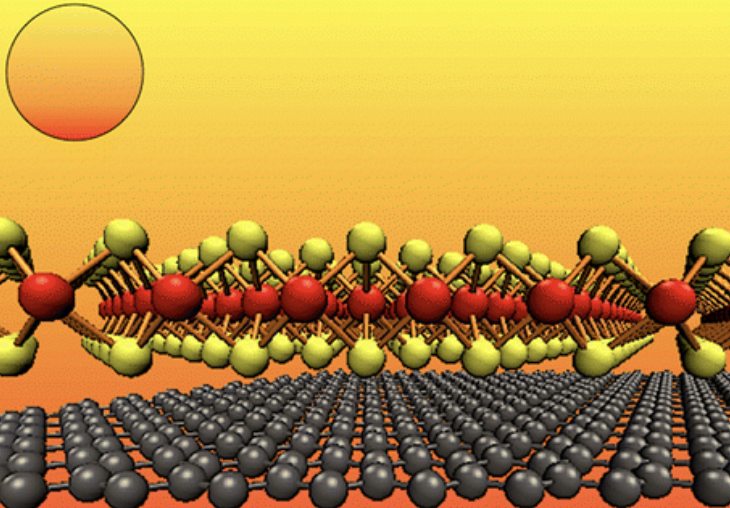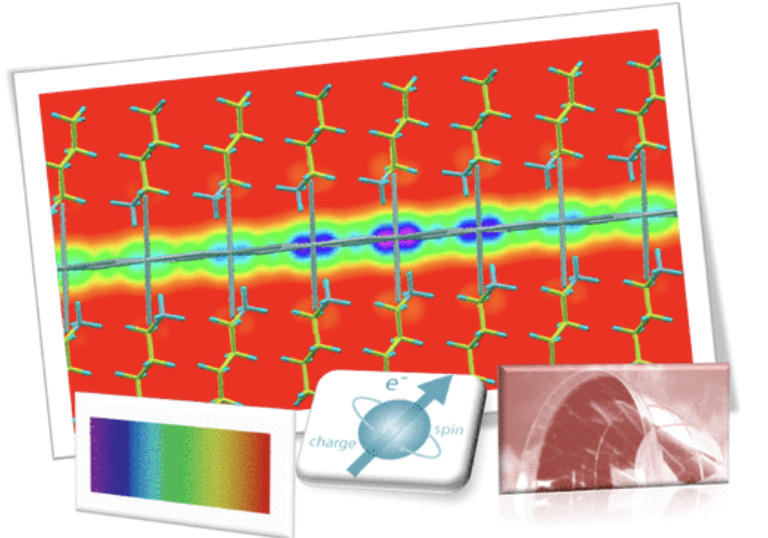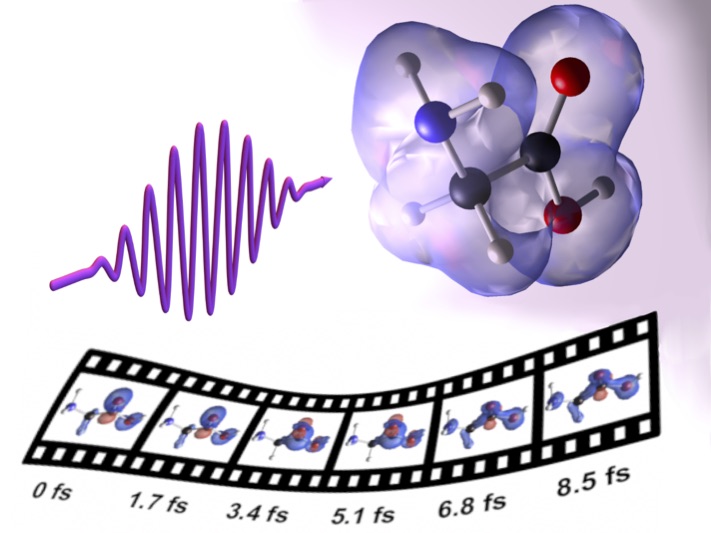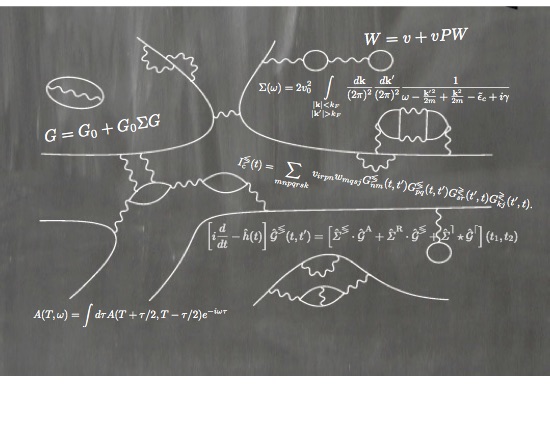Condensed Matter Theory
The Physics of Condensed Matter aims at understanding and possibly steering the quantum behavior of atoms, molecules as well as extended materials, and it represents worldwide the largest area of modern physics. The countless lines of research make it extremely dynamic and multidisciplinary with ramifications ranging from purely theoretical physics to applied physics, where it overlaps with material science, chemistry, biology and electronic engineering. It is mainly characterized by small / medium-sized “democratic” collaborations allowing for fast exchange of ideas and an everlasting flow of innovations. Theoretical and experimental developments over the last 70 years have de facto revolutionized everyone's daily life thanks to devices like transistors, lasers, solid-state drives, photovoltaic cells, etc. and foreseeably the revolution will continue…
Permanent Staff (alphabetic order)
Dr. Tommaso Giovannini
Prof. Maurizia Palummo
Dott. Enrico Perfetto
Prof. Olivia Pulci
Prof. Gianluca Stefanucci
The main research lines of Condensed Matter Theory active in our Department are:
Low-dimensional excitons

Excitons are hydrogen-like atoms where the “lack of an electron”, also named hole, play the role of the proton. They form upon light illumination, dominate the optical properties of low-dimensional materials and are ubiquitously used in optoelectronics. We investigate the single-exciton properties, such as binding energy, spatial distribution, life-time, etc., in nanodots, nanowires, two-dimensional materials etc. We also investigate the exotic behavior of excitonic fluids (screening, Bose-lile condensation, etc.) both in and out of equilibrium.
External collaborations: CNR Montelibretti (Rome, Italy), Fritz Haber Institute (Berlin, Germany), CNR-NANO (Modena, Italy), Massachusetts Institute of Technology (Cambridge, MA, USA) ,Caltech Institute of Technology (Pasadena, USA), Politecnico di Torino (Torino, Italy) ,CNRS (Orsay, Neel Institute Grenoble, and Marseille), Friedrich Schiller Universitaet (Jena, Germany), CNR-ISM, Westlake University (China), Southampton University (UK)
RECENT FUNDS: PRIN 2017, UTOV project-2DUTOPI, PRACE-2DOPTEL, 1 Iscra-B, HORIZON2020 MSCA RISE "CoExAN", HORIZON2020 MSCA RISE "DiSETCOm"
Opto-electronics and energy storage

Understanding the fundamental quantum-mechanical nature of the electronic and/or optical excitations of materials is an important prerequisite for any device applications in opto-electronics and energy storage. Systems of recent focus are : i) Hybrid and inorganic halide perovskites for low-cost photo-voltaics and LED applications, ii) group III-Nitrides 2D heterostructures, iii) Na based rechargeable batteries
External collaborations: UniPG, Tokyo Univ., Valencia Univ., Valparaiso Univ., CNR-NANO, IIT-Milano, ENEA Casaccia
RECENT FUNDS: 2 Iscra-B, HPC Europa3, MiSE PTR 2019-2020
Topological properties of matters

Besides metals, semiconductors and insulators, a new class of compounds, topological materials, was recently discovered. Their surface has different properties than the bulk: Topological Insulator may be a perfect conductor at their surface, even at room temperature; Weyl semimetals may have both, perfect conducting properties in the bulk and on the surface. These amazing properties are related to the existence of topologically protected states. The unique spin structure of topological states allows the design of optical switches that operate without external magnetic field, leading to a major technological breakthrough. We study Dirac, Weyl semimetals, topological insulators and their transition to trivial insulators upon the application of an external electric field.
External collaborations: Friedrich Schiller Universitaet (Jena, Germany), Loughborough University (UK), CNR, Bogolyubov Institute for Theoretical Physics, National Academy of Science of Ukraine, University of Roma 3, ISP Kiev, Belarus State University
RECENT FUNDS: HORIZON2020 MSCA RISE "CoExAN", HORIZON2020 MSCA RISE "DiSETCOm"
Interaction effects in organic materials

Light-driven processes in organic materials are of undoubt importance in several fields from opto-electronics, solar-harvesting to photochemistry and photobiology. Through sophisticated quantum-mechanical theoretical and numerical schemes we study several classes of organic compounds in collaboration with experimental groups and aim at understanding fundamental mechanisms driven by the interplay of electron-electron interaction, electron-nuclear and electron-photon interactions (shake-up effects, Auger decays, charge-transfers, multiphoton-ionization, nuclear decoherence etc.) which are at the basis of photoprotection and photodamage
External collaborations: CNR Montelibretti (Rome, Italy), Center for Free-Electron Laser Science (CFEL), DESY (Hamburg, Germany), IFN-CNR (Milan, Italy), Bicocca, Politecnico Milano
RECENT FUNDS: PRIN 2017
Applications to cultural heritage

The yellowing of paper on aging causes major aesthetic damages of cultural heritage. It is due to cellulose oxidation, a complex process with many possible products still to be clarified. By comparing ultraviolet-visible reflectance spectra of ancient and artificially aged modern papers with ab-initio Time-Dependent Density Functional Theory calculations, we can identify and estimate the abundance of oxidized functional groups acting as chromophores and responsible of paper yellowing.
This knowledge can be used to set up strategies and selective chemical treatments preventing paper yellowing.
External Collaborations: CNR-ISC
RECENT FUNDS: ADAMO project (DTC Lazio)
Theoretical and numerical developments

Theoretical and numerical developments are necessary to accurately calculate material-specific properties and to deal with an ever growing complexity of the studied systems. We keep developing one of the most versatile approach in physics, i.e., the Green’s Function formalism. We also keep developing and maintaining our home-made codes as well as the open source code Yambo (http://www.yambo-code.org/)
External collaborations: University of Jyvaskyla (Jyvaskyla, Finland), Universidad del Pais Vasco (San Sebastian, Spain), Max Planck Institute (Hamburg, Germany), CNR-NANO, CNR-ISM
RECENT FUNDS: PRIN 2017